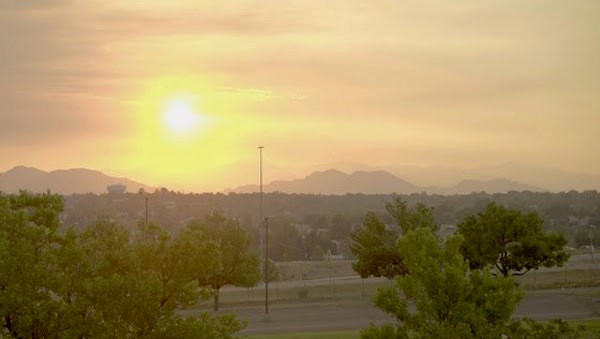Ozone season — which spans from June to August — is over along the Front Range. This year’s numbers are lower than previous years.
In 2020, stations along the Front Range forecasted 43 Ozone Action Alert Days. In 2021 the number grew to 73 and dropped to 46 in 2022. This year only 38 days were recorded.
All but one of those days took place during the season with one day recorded in September.
Ozone Action Alert Days are determined by the Environmental Protection Agency. In 2015 violation standards increased from 75 ppb (part per billion) — which was set in 2008 — to 70 ppb.
Ground-level ozone is one of the Front Range’s most pressing air quality problems, according to the Regional Air Quality Council.
“The human-caused emissions that combine to form this invisible, odorless pollutant in the heat and sunshine of beautiful Colorado days come mainly from diesel and gas-powered vehicles, gas-powered lawn and garden equipment, and oil and gas production,” the organization stated in a news release.
The Regional Air Quality Council attributes the decrease in action days to public awareness, individual actions, large scale public transit efforts, voluntary vehicle and equipment electrification and regulatory efforts.
The increased rain totals over the summer also attributed to better air quality, the organization stated in the news release.
In an effort to further reduce ozone days, the Regional Air Quality Council plans to roll out the following programs:
- Applying $600,000 to the Mow Down Pollution programs, as part of a September 2023 Supplemental Environmental Program (SEP) settlement related to Suncor air quality violations.
- Residential lawn and garden equipment exchanges in communities close to the Commerce City Suncor facility.
- Additional funding to local governments electrifying parks and other equipment at scale.
- Anti-idling campaigns, targeting reductions in both commercial vehicle idling across the region and passenger vehicle idling near schools.
- Employer micro-grants to support businesses who encourage employees to take alternative transportation or increased work from home.
- Auto Maintenance and Repair programs that provide no-cost repairs for older vehicles that have or likely will fail emissions tests.
- Increased community marketing and engagement, including new hyper-localized efforts.
“Collective action can and will continue to make a meaningful difference in reducing ground-level ozone. Roughly half of ozone precursors come from industry, but the other half come from all of us: driving gas vehicles, using gas lawn equipment, and burning other fossil fuels,” said Kelsey Simpkins, communications and programs coordinator for the RAQC. “Individuals are not only half the solution to reducing this invisible air pollutant, but it's also their health and that of their communities here in the Front Range which will benefit."



